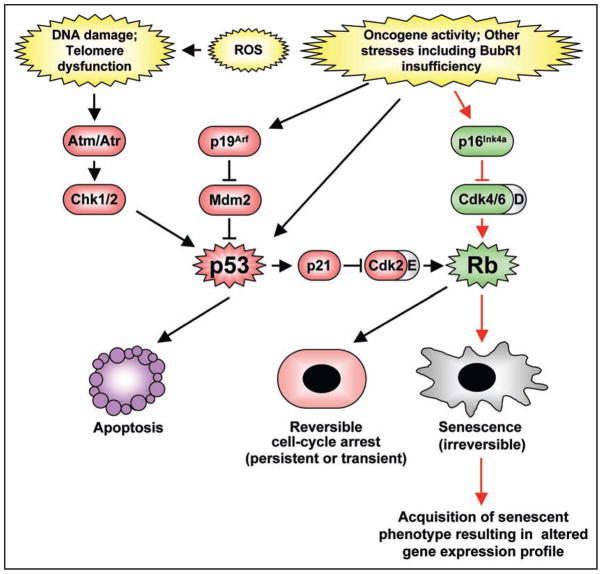Figure 1.
Senescence controlled by the p16Ink4a-Rb and p19Arf-p53 pathways. Various intrinsic and extrinsic stress-inducing signals are able to engage the tumor suppressor pathways containing p53, p16Ink4a-Rb or both. Activation of p53 triggers cell death by inducing expression of a number of downstream target genes implicated in apoptosis (e.g., Bim, Puma, Noxa, Bid, Bax and Apaf1) or a transient or permanent (though reversible) cell cycle arrest via induction of p21. On the other hand, Rb is capable of inducing an irreversible state of cellular senescence via repression of E2F target genes and alterations in chromatin structure.

